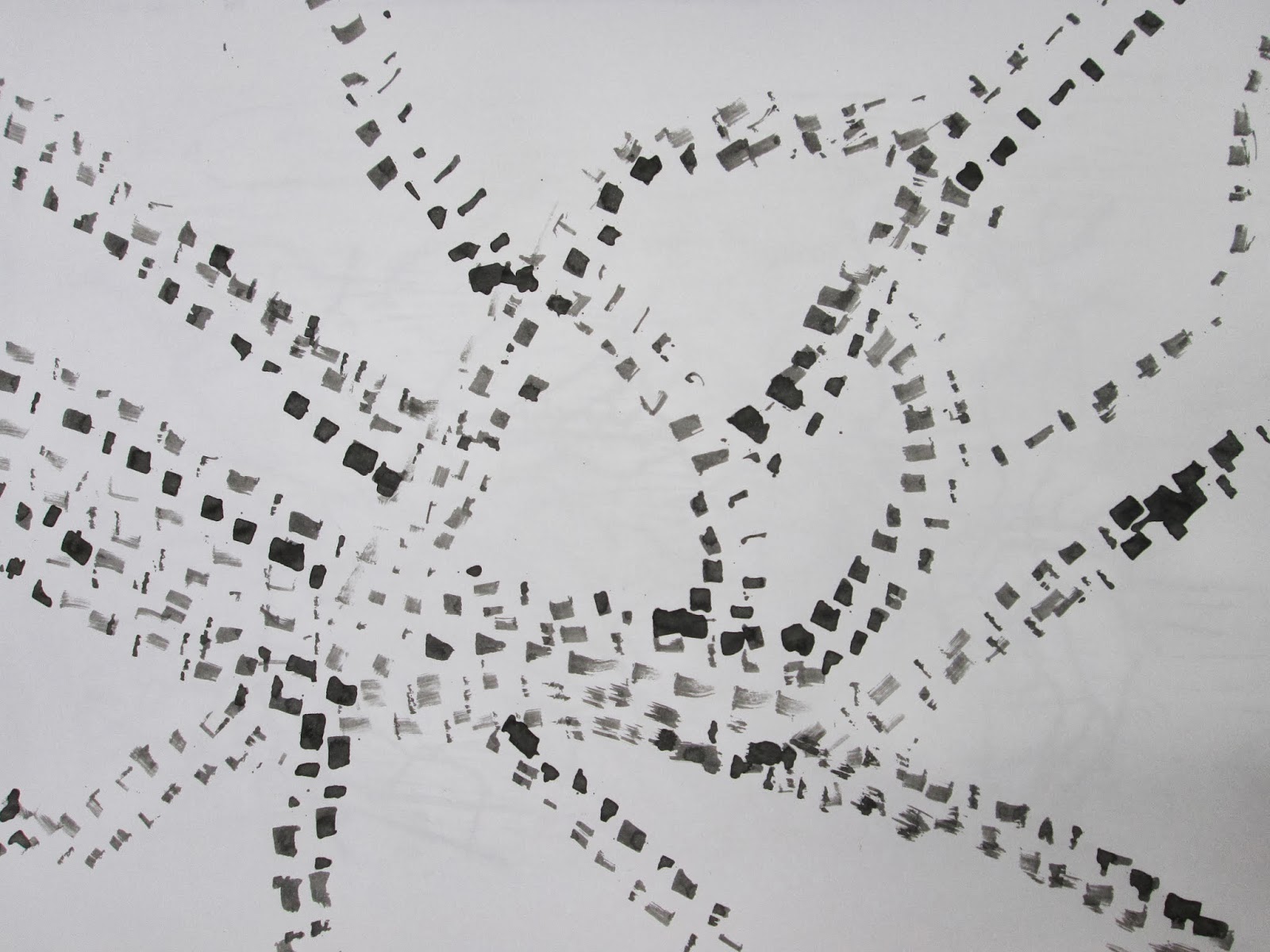This final week in machine embroidery has been spent using 3 different sizes of pin tuck feet, developing samples and sketchbook work, along with choosing 25 samples out of both my hand and machine embroidery samples too mount as final samples.
 |
| Pin tuck background with tailor tack stitch- map lines. |
Of my samples this week, this is my most successful. I think that pin tucking the fabric all over to use as a background worked really well as something too work on top of, and then adding the tailor tacked lines inspired by the lines of my map drawings made the sample come too life. The addition of the white filling some of the negative space between the lines also adds too the success of the sample.
 |
| Pin tuck background with satin stitched pin tuck map-like lines on either side of fabric. |
If I was too improve a sample that I have done this week, I would choose this cream with black stitched pin tucks. I think that the cream cotton doesn't give the look that I'd like it too, and this is because my research and drawings are heavily focussed on black and white and so the addition of cream doesn't look success.
 |
| Pin tuck- avoiding mapped out lines. |
My most unsuccessful sample of the week is this simple pin tuck sample, filling in negative space to create lines. Although this idea of creating a drawing my stitching around the lines has made some of the most successful samples of this project over the last few weeks with use of the other machine feet, the pin tuck foot on this fabric has distorted and made unusual lines and marks which do not look as successful as my other samples.


















